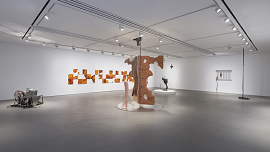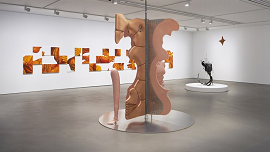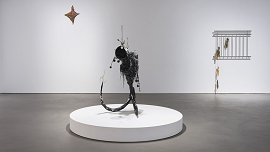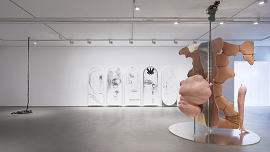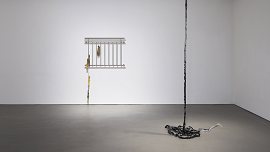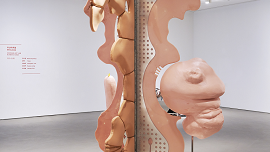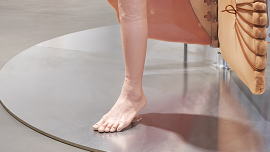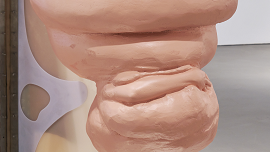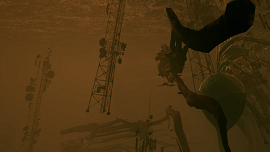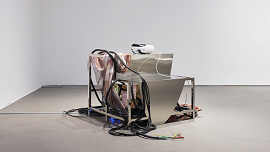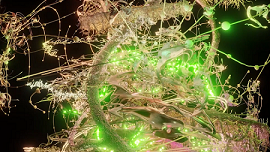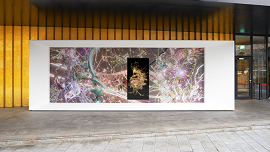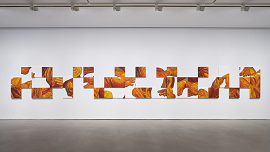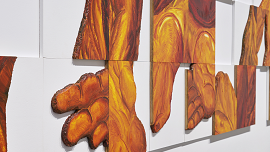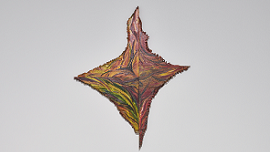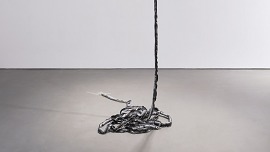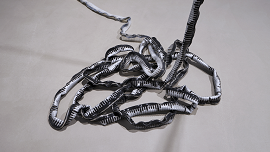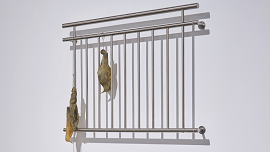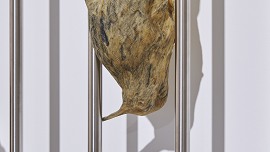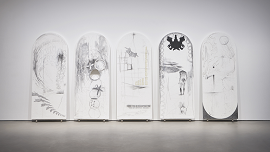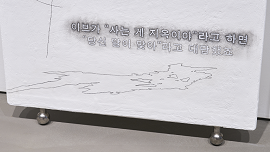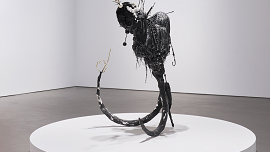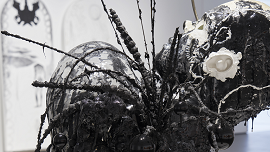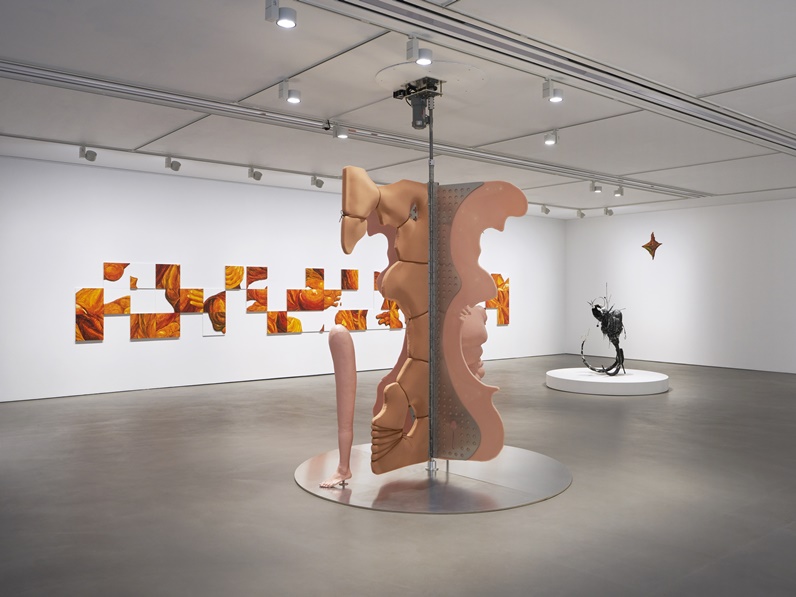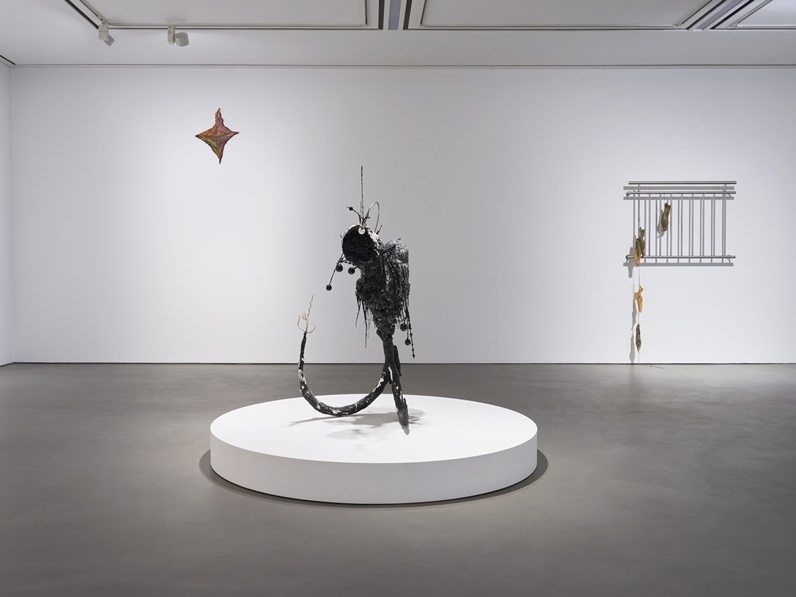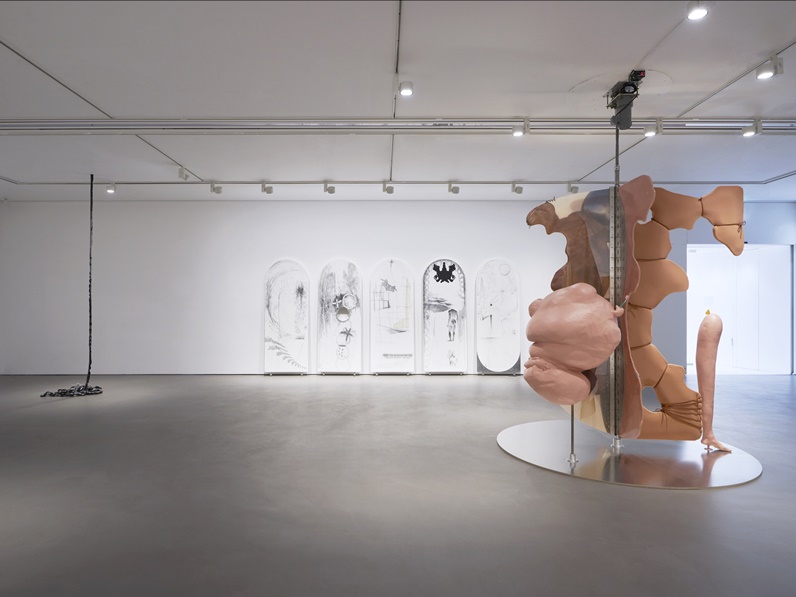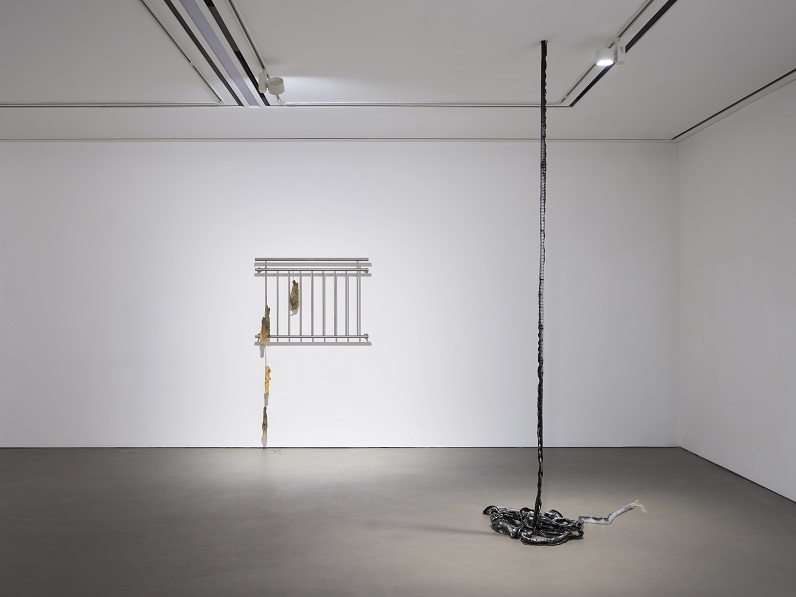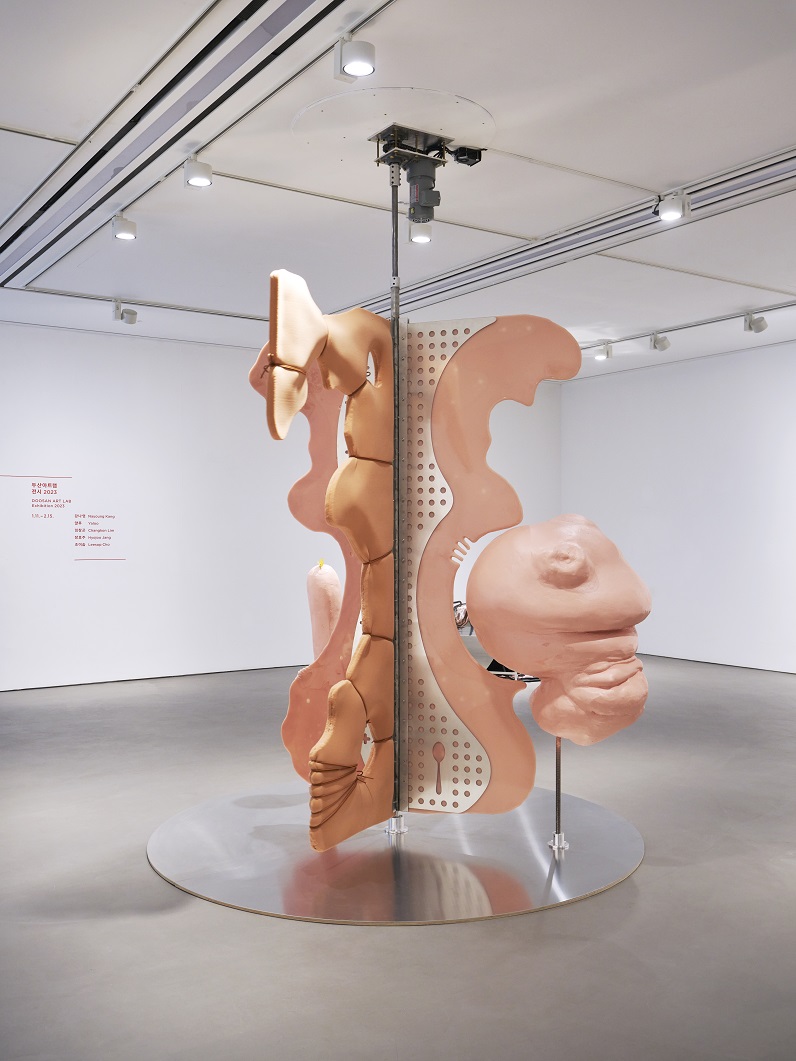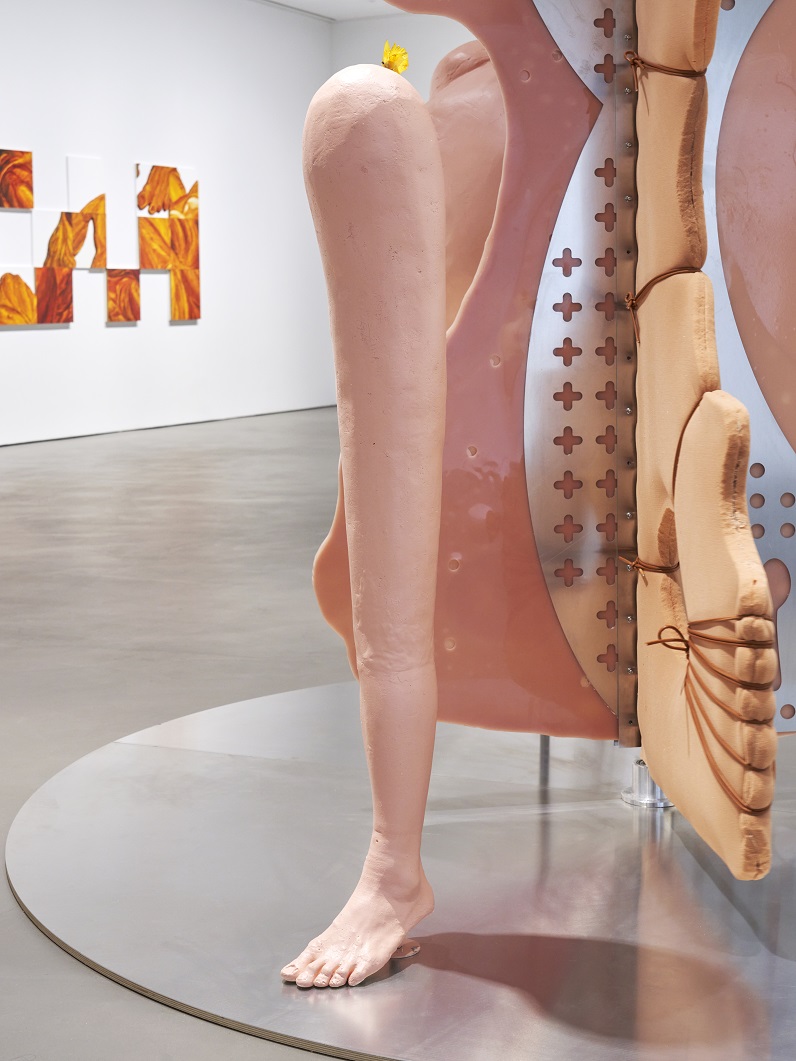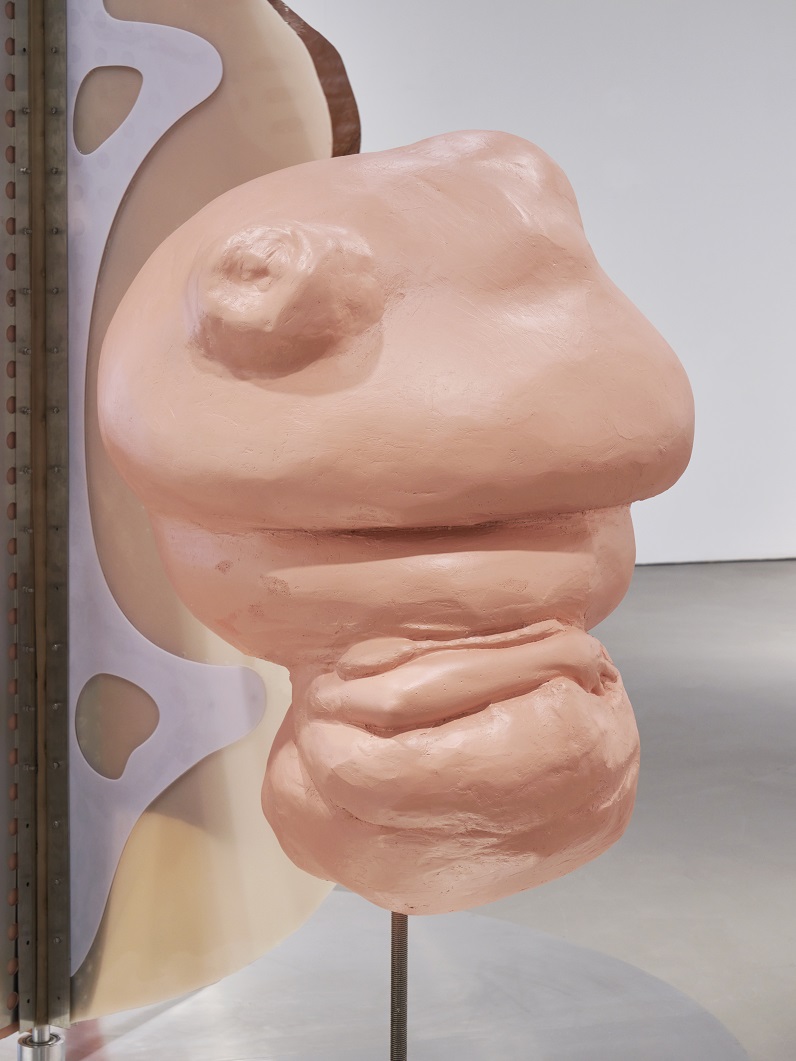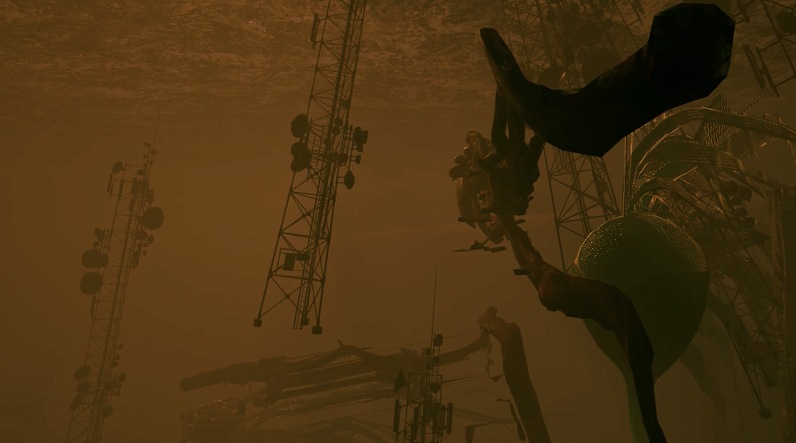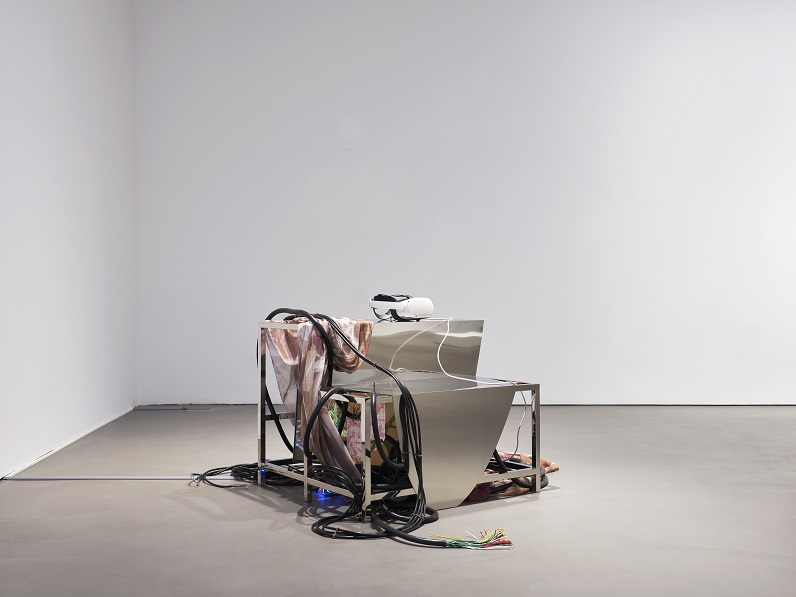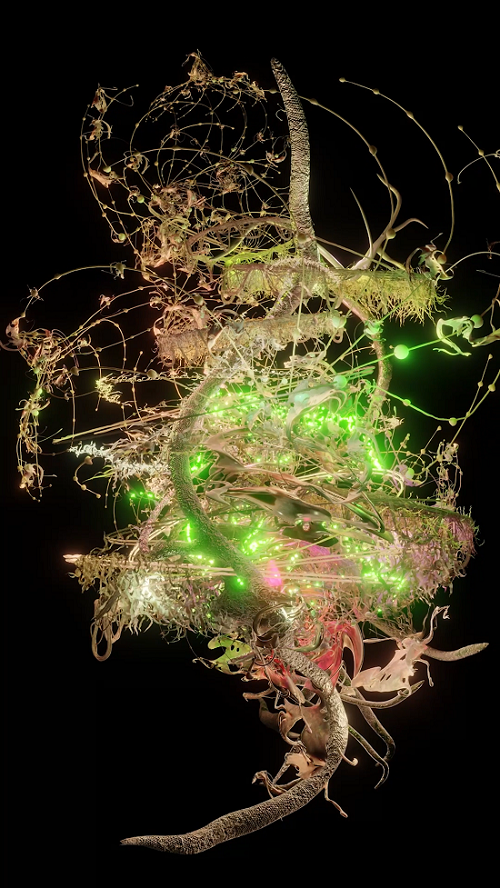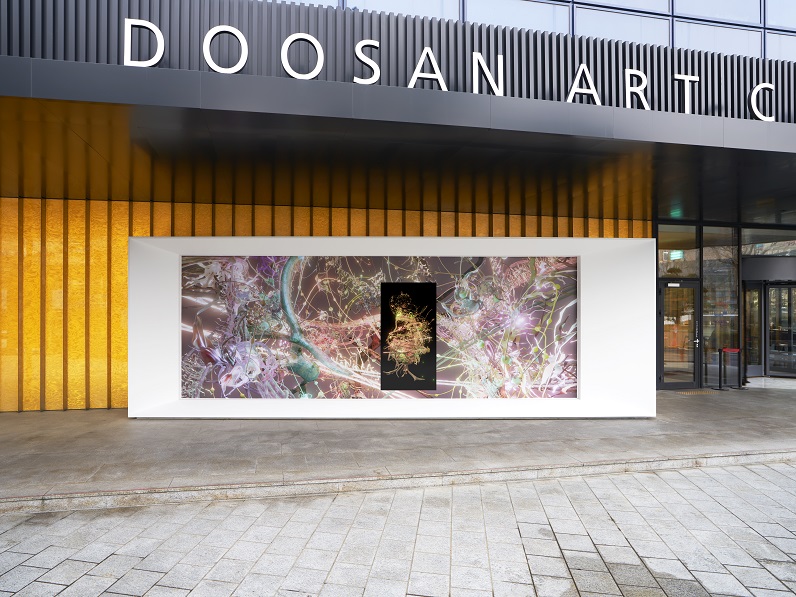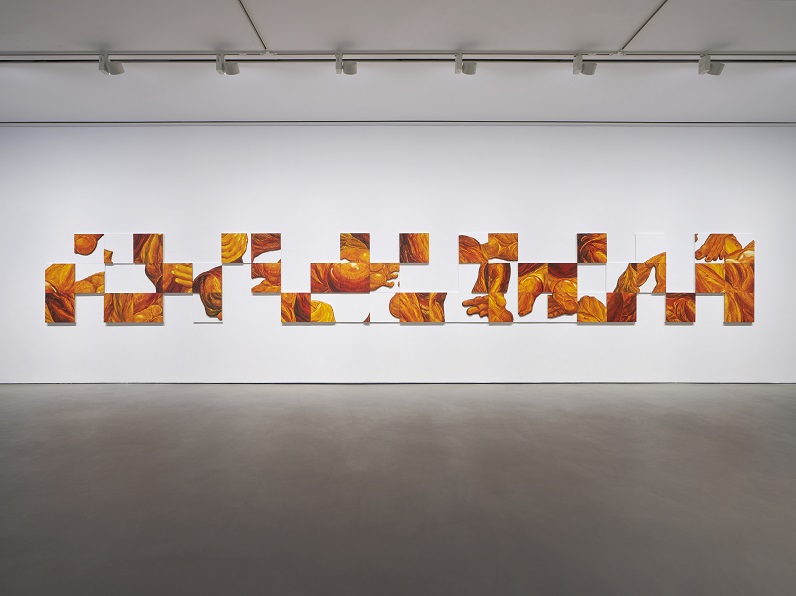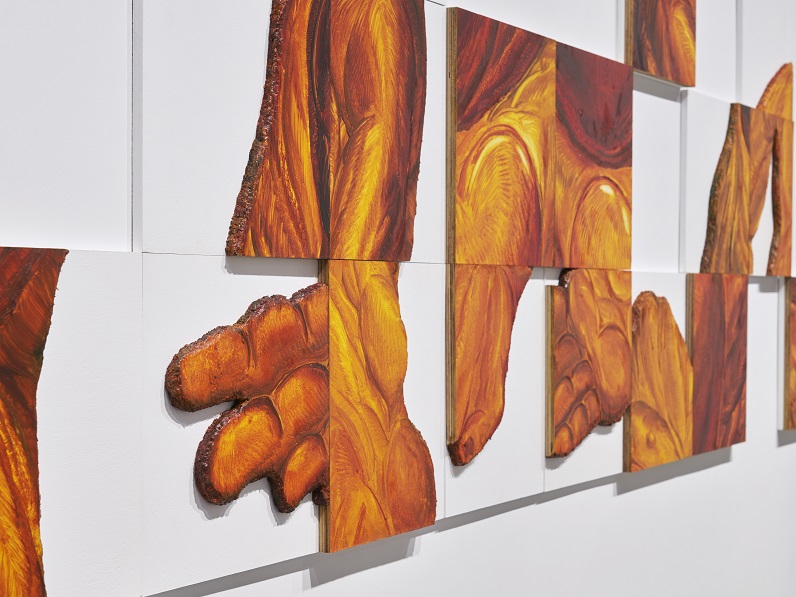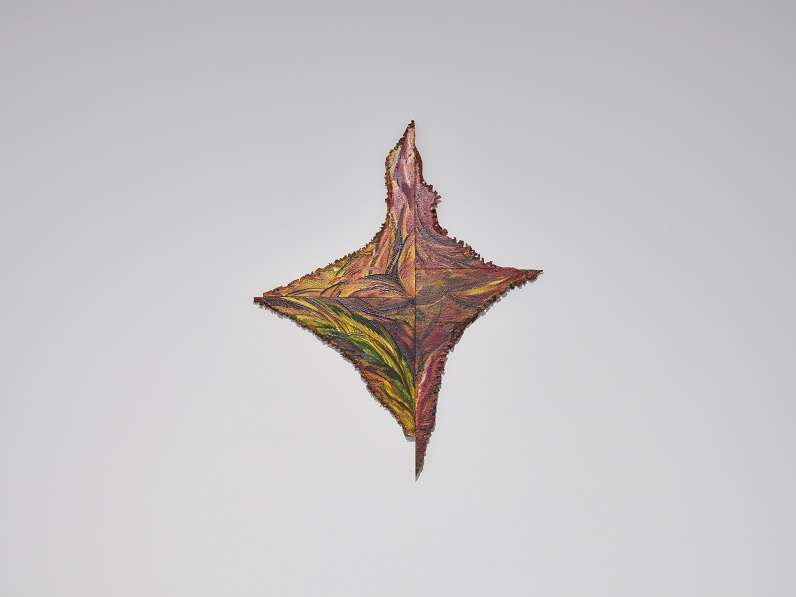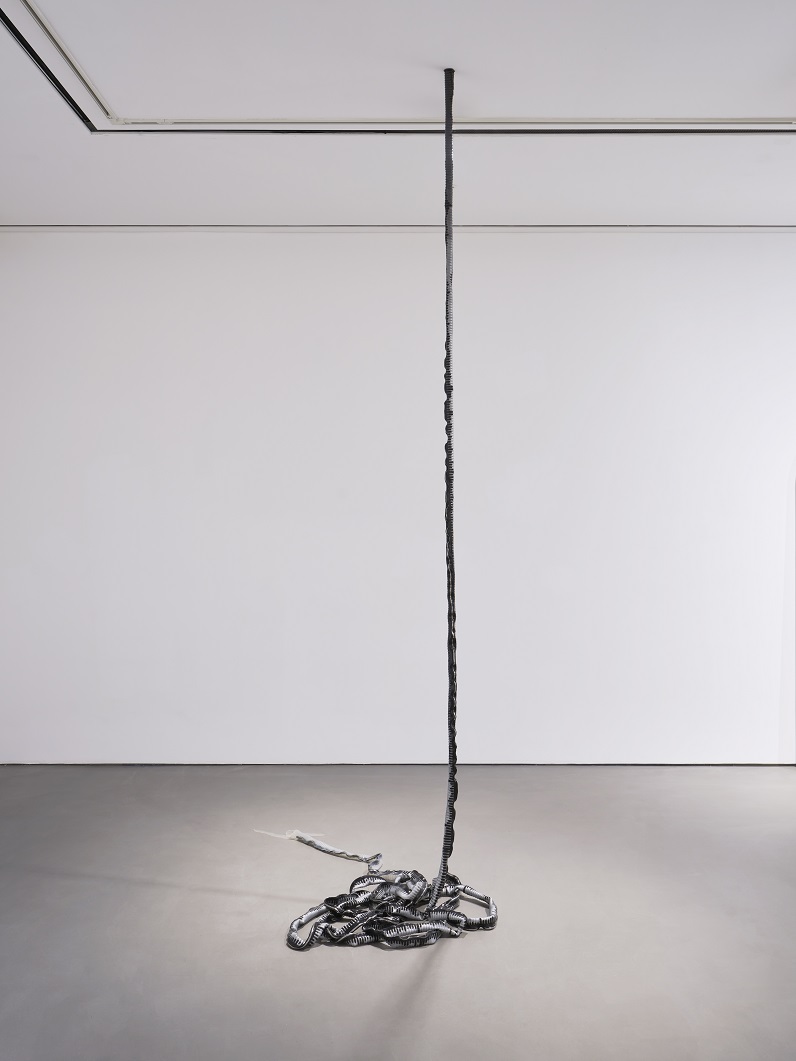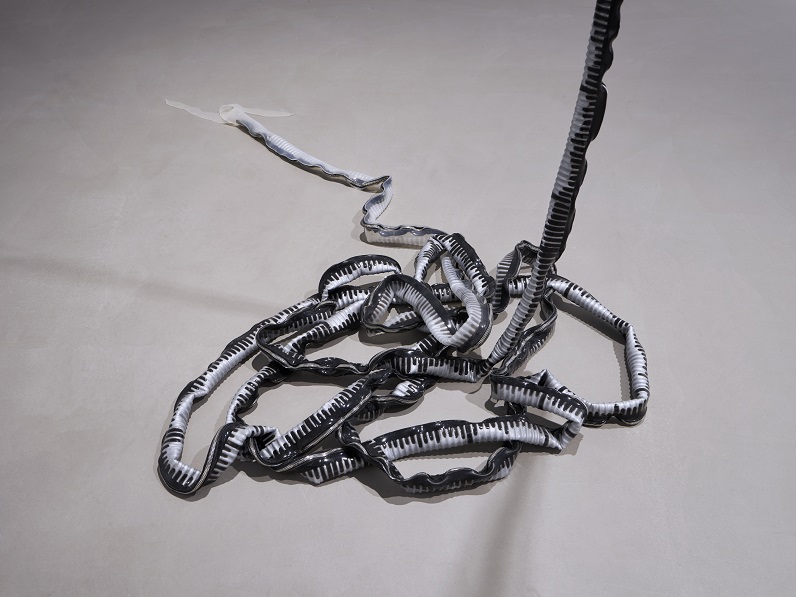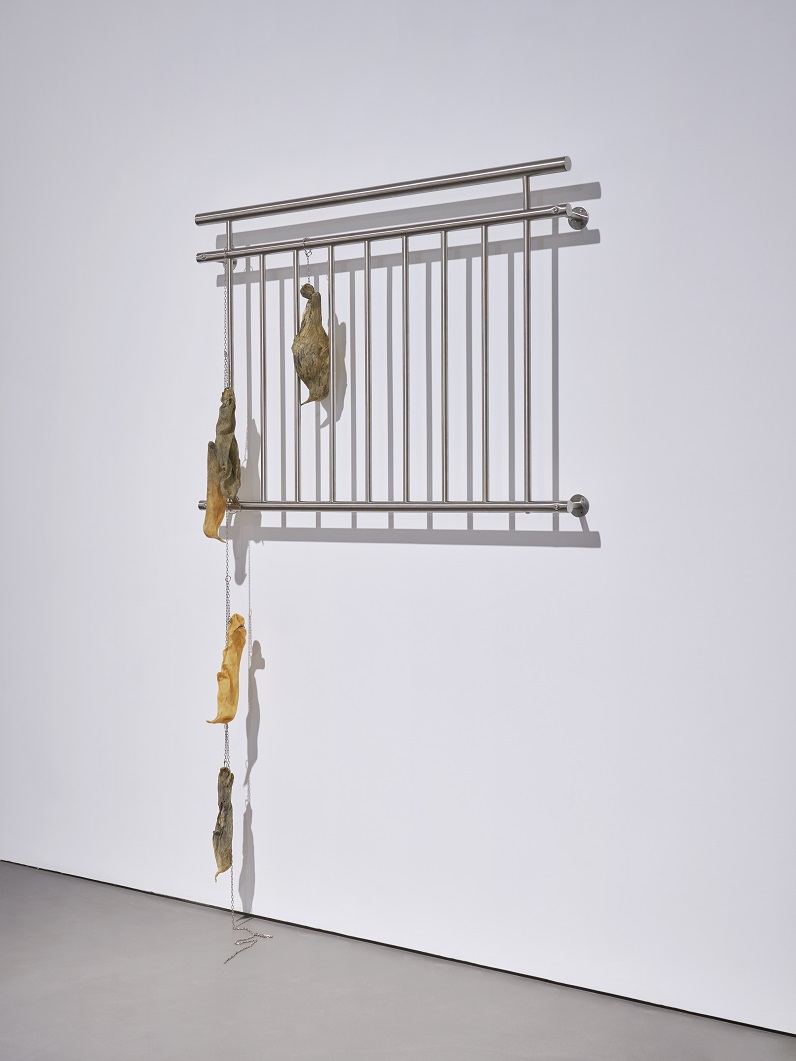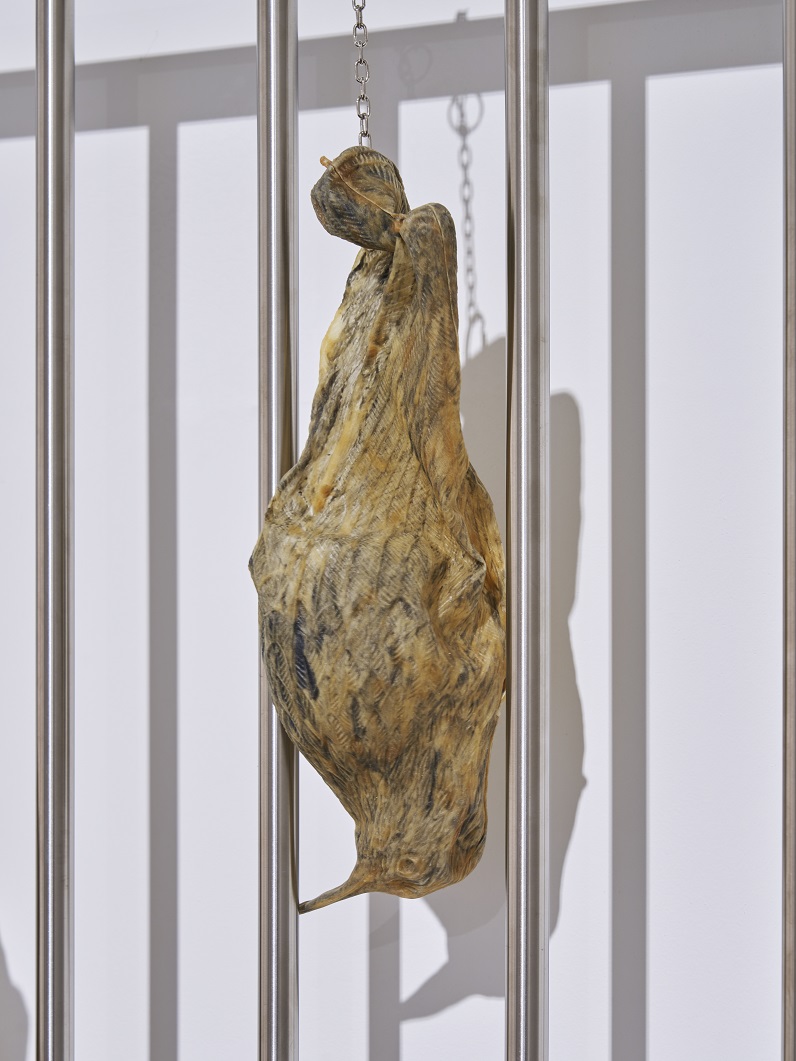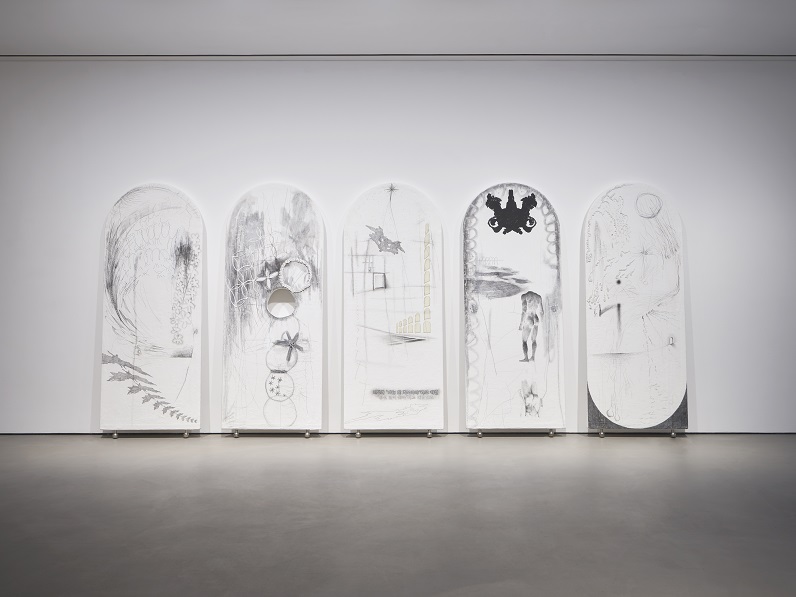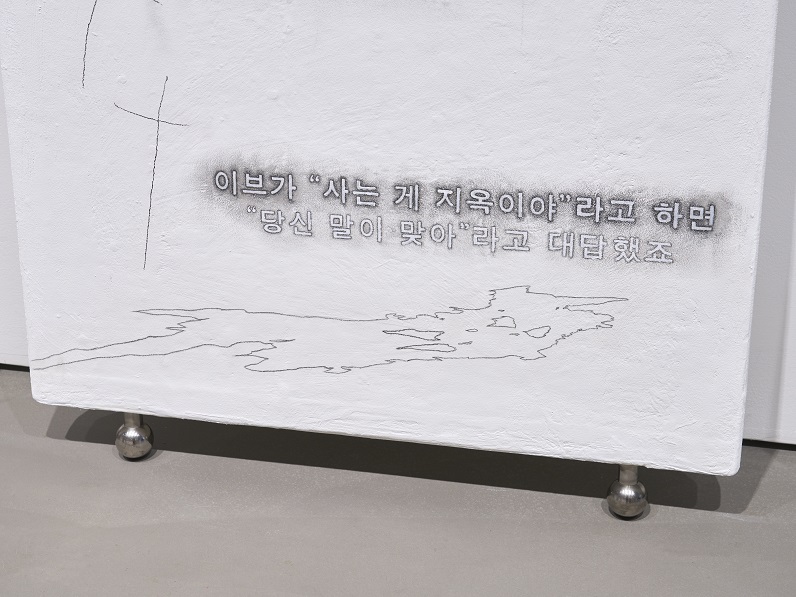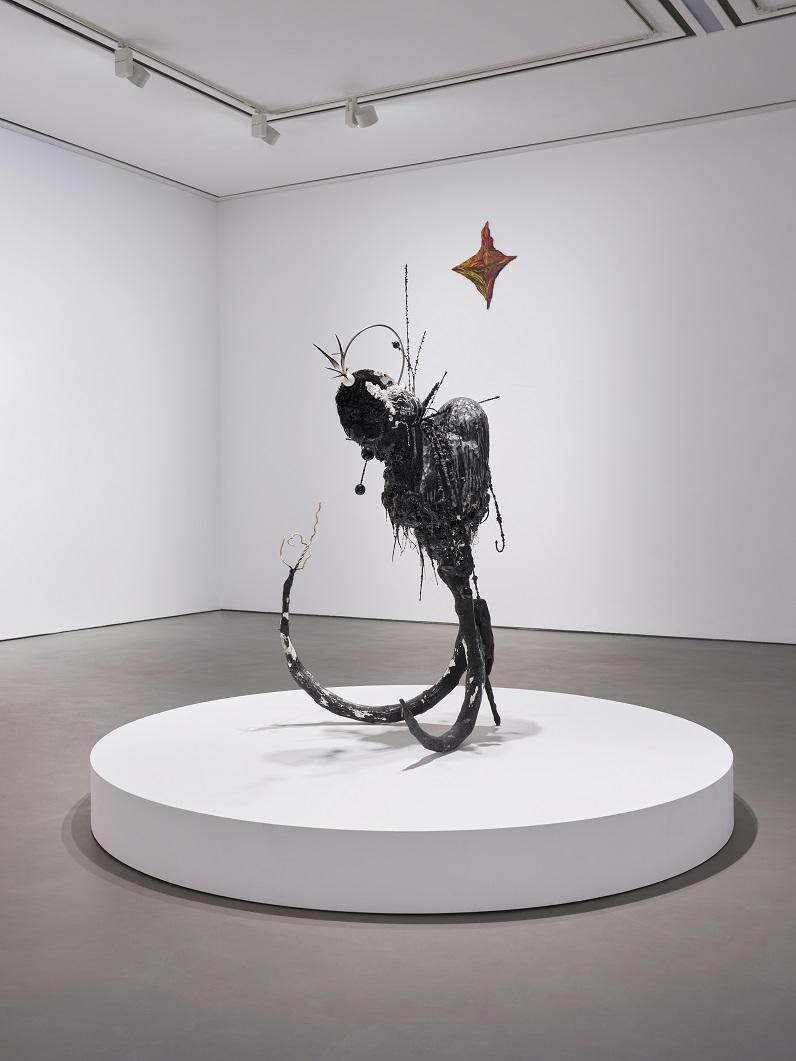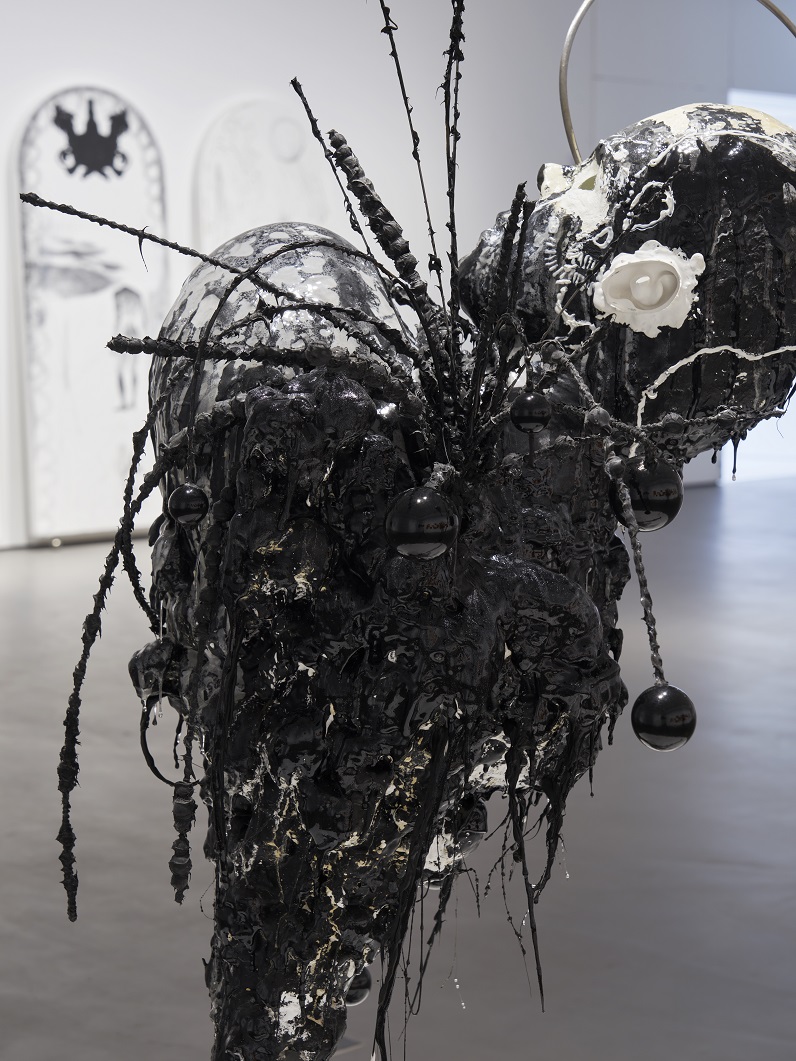- ProgramDOOSAN Art LAB
- Artist Nayoung Kang Yaloo Changkon Lim Hyojoo Jang Leesop Cho
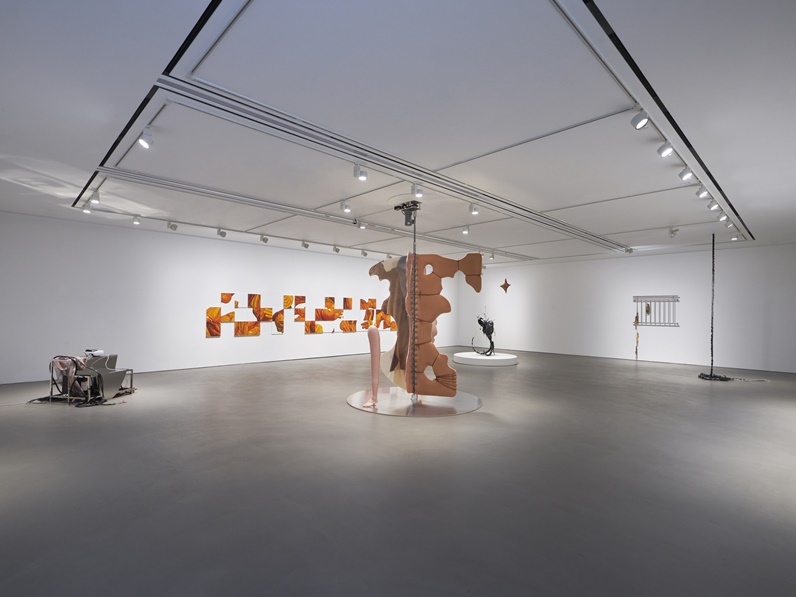
Installation view
Tuesday-Saturday 11:00~19:00 / Closed on Sunday and Monday
DOOSAN Gallery: 15, Jongno 33-gil, Jongno-gu, Seoul, Korea
Tel. 02-708-5050
* Closed on Lunar New Year (Korean New Year): Jan 21(Sat) – 24(Tue)
DOOSAN Gallery is pleased to present DOOSAN Art LAB Exhibition 2023 from January 11th (Wed) to February 15th (Wed), 2023. DOOSAN Art Lab is a program launched in 2010 by DOOSAN Art Center to discover and support emerging artists in the visual and performing arts. The “DOOSAN Art LAB Exhibition” is a recurring group exhibition, each presenting five artists under age 35 selected through an open call. The artists selected for DOOSAN Art LAB Exhibition 2023 are Leesop Cho, Hyojoo Jang, Nayoung Kang, Changkon Lim, and Yaloo, all of whom query and think about the boundaries they encounter in life.
The stories of the five artists, which cannot (and maybe should not) be reduced to one symbolic word, center around the numerous barriers and facades in society before they are re-verbalized through each artist’s personal experiences and interests. The artists Leesop Cho, Hyojoo Jang, Nayoung Kang, Changkon Lim, and Yaloo each traverses and studies many different insides and outsides, digs in between, sometimes gets lost in there or hindered, questions, and investigates. Then, they put forth attempts to overcome the bounding perimeter and suggest new ways to open or close it up.
Nayoung Kang, interested in the daily lives of minorities and the act of caring, has worked with various mediums, including sculpture and video. In this exhibition, Kang focuses on how the revolving door, seemingly wide open at all times, can appear to be a completely shut structure to a certain group of people, for example, the feeble elderly or wheelchair users. Kang’s new work To Barely Fit (2023) hinges on the mechanism and appearance of revolving doors and prosthetic limbs and symbolizes the gesture of care, such as soft touches and support. Kang’s work inspires one to notice the myriad thresholds around us and contemplate those who are unable to step over them.
On the other hand, the recurring representation of a “door” in Leesop Cho’s work simultaneously imprisons and liberates the artist. It signifies not only a passageway but also a fence, a , and a mirror. Leesop Cho, a being who is not hopeful about finding a place to settle and a being who finds it challenging to reveal nor conceal himself, sculpts his feelings of insecurities and imperfection. A black and white mélange of silicon, plaster, wire, beads, thread, and feathers stands precariously in the space, which is then redrawn and echoed in the door//mirror―Cho’s gesture of confession, protection, and identification.
Concerns as a minority, conflicts over uncertainty, and ceaseless efforts to find a place are important factors in Changkon Lim’s work. Lim implements his queries in the form of painting as well as imagery as he deconstructs, transposes, and recombines the image and its support in an attempt to find answers. The enlarged and delicately drawn bodies and skin become fragmented and rearranged but continue to move and expand. They are an exploration of what “human beings” really are, an interrogation of extant customs and norms, and a will to overcome the constricting gaze toward marginalized beings.
Hyojoo Jang’s work uses “texture-tactility” to emphasize the gap between the opposite sides of a threshold that can only be sensed on the boundary, like wind on a balcony, an in-between space that is neither inside nor outside. Jang’s sculptural experiments eschew the original properties and function of various materials, such as ceramic, epoxy, latex, pleather, and metal, and combine them in unexpected ways. These sculptures exist in the gallery in a much unfamiliar and bizarre way, like a button fastened in the wrong hole or something secretive that has been exposed. The uncanny scenes and moments created by Jang are at once mediumistic experiments, doubts about the existing systems and structures, and an attempt to establish a new zone.
Lastly, Yaloo, who imagines a future that should be better than the present, constructs alternate time and space underwater. Working with digital mediums, such as projection mapping, virtual reality, media walls, and digital montages, Yaloo envisions a virtual deep-sea ecosystem in which various points in human history intertwine. This space is neither dystopic nor utopic but a mixture of something beautiful, bizarre, terrifying, and sublime all at once. Yaloo presents a landscape that cannot be defined under the anthropocentric agenda, which has thus been deemed the standard, and dreams of a future free of such conventional perspective where human and non-human values coexist.
Boundaries, the existence of borders and gaps, can be painful. However, the subtle sentiments and diverse observations that happen within those gaps help expand our perspectives, transform societies, and become food for new creations. The world(view)s of Leesop Cho, Hyojoo Jang, Nayoung Kang, Changkon Lim, and Yaloo take the form of art and inspire us to imagine the future that individuals, communities, societies, and, eventually, humanity at large ought to achieve. These artists’ suggestions will help us reckon how to erase binaries rather than overcome boundaries and exist without compromising who we are, that is, draw boundaries in alternate ways.
Nayoung Kang (b. 1989) graduated from University of Leeds with a bachelor’s degree in Fine Art and received her Master’s degree from Royal College of Art of Sculpture. Kang has held her solo exhibition at Space OS (2019, Seoul, Korea) and participated in group exhibitions including Incheon Art Platform (2022, Incheon, Korea), Out_sight (2021, Seoul, Korea), Amado Art Space (2020, Seoul, Korea), Chiswick House (2018, London, UK), Safehouse Gallery 2 (2018, London, UK), and Sculpture Garden (2016, London, UK).
Yaloo (b. 1987) received both her B.F.A. and M.F.A. from School of the Art Institute of Chicago (SAIC). Living and working in Seoul and Chicage, she has held her solo exhibition at Saga (2022, Seoul, Korea), Shhh (2022, Incheon, Korea), Vox Populi (2019, Philadelphia, USA), and Art Center Nabi (2019, Seoul, Korea), and held 2 person exhibition at FACT (2022, Liverpool, UK). Also she has participated in group shows including those held at ZER01NE (2022, Seoul, Korea), Floriade Expo 2022 (2022, Almere, Netherlands), and Asia Culture Center (2019, Seoul, Korea).
Changkon Lim (b. 1994) graduated from Seoul National University of Painting. He has held his solo exhibition at Cadalog Space (2022, Seoul, Korea) and Artspace Hyeong (2019, Seoul, Korea). His works have been featured in group shows held at BGA INDEX (2022, Seoul, Korea), HITE Collection (2021, Seoul, Korea), Museumhead (2021, Seoul. Korea), Hall1 (2021, Seoul, Korea), Post Territory Ujeongguk (2019, Seoul, Korea), and WOOSUK GALLERY (2018, Seoul, Korea).
Hyojoo Jang (b. 1988) graduated from Kookmin University and studied at Akademie der Bildenden Künste München under Professor Stephan Huber and then graduated the Diplom as Meisterschülerin from Professor Alexandra Bircken. Based in Seoul and Munich, Jang has held solo exhibitions in Saga (2022, Seoul, Korea) and Gedok (2021, Munich, Germany). She also has participated group exhibitions include Ulsan Art Museum (2022, Seoul, Korea), WESS (2021, Seoul, Korea), Galerie der Künstler (2021, Munich, Germany), and Artothek & Bildersaal (2021, Munich, Germany).
Leesop Cho (b. 1994) graduated from Seoul National University with a bachelor's degree in Sculpture, and is currently pursuing his M.F.A. degree at the same graduate school. He has held solo exhibitions at the Kimchongyung Museum (2022, Seoul, Korea). Also he has participated in group shows including Suchi (2022, Seoul, Korea), LaLa& (2022, Seoul, Korea), Space Four One Three (2021, Seoul, Korea), Museumhead (2021, Seoul, Korea), Gallery 175 (2021, Seoul, Korea), Coreana Museum of Art (2021, Seoul, Korea), and WESS (2021, Seoul, Korea).
Curated by Hyejung Jang │ Assisted by Soun Park


